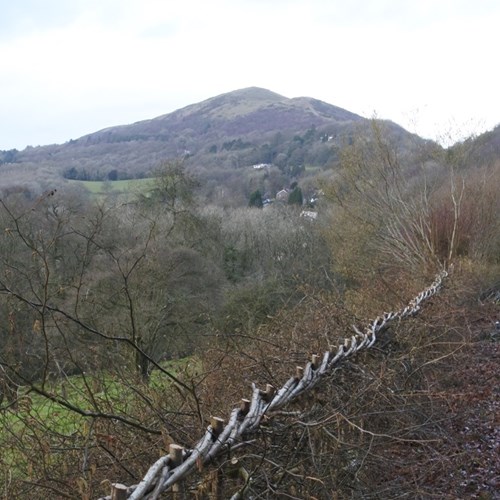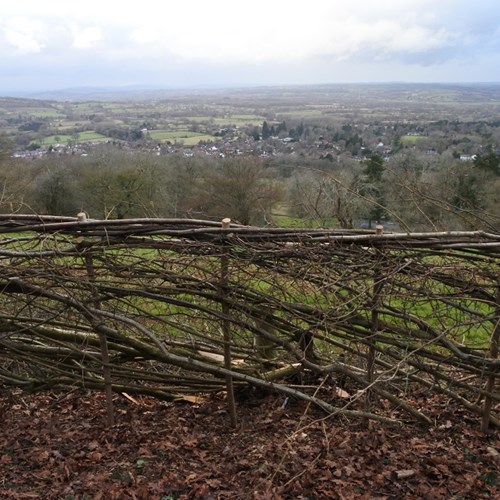The importance of hedgerows within a landscape can sometimes be overlooked but healthy, thick and diverse hedges provide a wealth of food for insects, small mammals and birds throughout the seasons. You may find bees on flowers in the spring and redwings eating berries in the winter months. They also provide shelter for wildlife and somewhere to nest all year round.
Hedges also play a key role in the wider countryside landscape by providing links and connectivity between different habitats for example separate patches of woodland. Wildlife such as bats travel along these corridors to forage.
They also have other practical roles by keeping livestock within fields and reducing water erosion and run-off.
To conserve wildlife-rich hedgerows they need to be maintained and hedgelaying is a traditional, sensitive way of doing this. Hedgelaying closes gaps in the lower parts of the hedge and encourages new growth to thicken it.
Along Chase Road and on Malvern Common we have recently supported a hedgelayer to manage hedgerows which will develop into an ideal habitat for local wildlife. We are looking forward to watching the hedgerows bloom over spring and summer and seeing some of the creatures making this their home.


